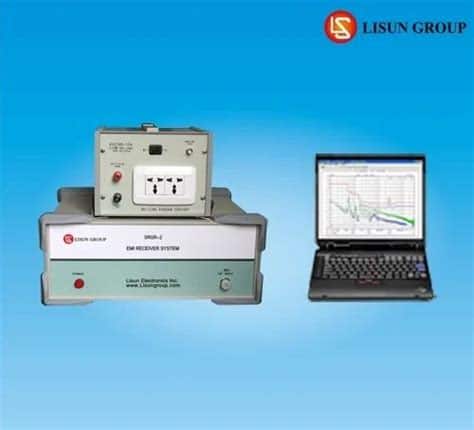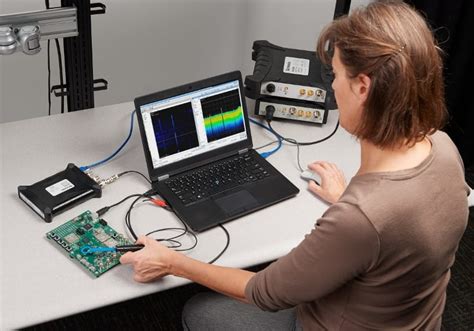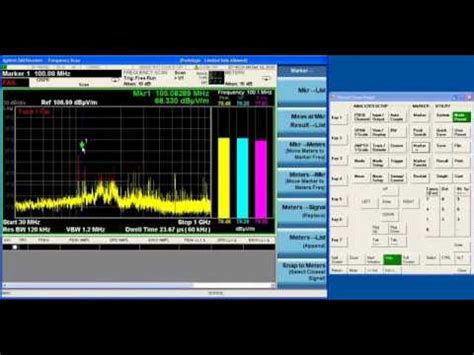Introduction to EMI and Noise Control
Electromagnetic interference (EMI) is a disturbance generated by an external source that affects electrical circuits by electromagnetic induction, electrostatic coupling, or conduction. The disturbance may degrade the performance of the circuit or even stop it from functioning. In the case of a data path, these effects can range from an increase in error rate to a total loss of the data. EMI can be intentional, such as in some forms of electronic warfare, or unintentional, such as a result of spurious emissions and responses, intermodulation products, and the like.
EMI control is the practice of reducing or eliminating electromagnetic interference. This can be done through a variety of methods, including shielding, filtering, grounding, and proper circuit design. EMI control is important in a wide range of applications, from consumer electronics to military and aerospace systems.
Sources of EMI
EMI can come from a variety of sources, both natural and man-made. Some common sources include:
- Power lines: Power lines can radiate EMI due to the high voltages and currents they carry. This can affect nearby electronic devices.
- Electrical motors: Motors can generate EMI due to the switching of currents in their windings. This can affect nearby electronic devices.
- Switching power supplies: Switching power supplies can generate EMI due to the high-frequency switching of their transistors. This can affect nearby electronic devices.
- Wireless devices: Wireless devices, such as cell phones and WiFi routers, can generate EMI due to their radio frequency (RF) emissions. This can affect nearby electronic devices.
- Lightning: Lightning can generate EMI due to the high voltages and currents involved. This can affect electronic devices over a wide area.

Effects of EMI
EMI can have a variety of effects on electronic devices, depending on the strength and frequency of the interference. Some common effects include:
- Data corruption: EMI can cause data errors in digital systems, leading to corrupted data or system crashes.
- Noise: EMI can introduce noise into analog circuits, degrading signal quality and potentially causing system malfunctions.
- Heating: High levels of EMI can cause heating in electronic components, potentially leading to damage or failure.
- Interference with communications: EMI can interfere with wireless communications, causing dropped calls or reduced data rates.

EMI Control Techniques
There are several techniques that can be used to control EMI and reduce its effects on electronic systems. These include:
Shielding
Shielding involves enclosing electronic components or systems in a conductive enclosure to block EMI. The shield can be made of metal, such as aluminum or steel, or conductive plastics. Shielding can be applied at various levels, from individual components to entire systems.
| Shielding Material | Effectiveness | Cost |
|---|---|---|
| Aluminum | High | Low |
| Steel | High | Medium |
| Copper | Very High | High |
| Conductive Plastic | Medium | Medium |
Filtering
Filtering involves using passive or active components to block or attenuate EMI signals. Passive filters, such as capacitors and inductors, can be used to block high-frequency EMI signals. Active filters, such as common-mode chokes, can be used to cancel out EMI signals.
| Filter Type | Effectiveness | Cost |
|---|---|---|
| Capacitor | Medium | Low |
| Inductor | Medium | Low |
| Common-Mode Choke | High | Medium |
| LC Filter | High | Medium |
Grounding
Proper grounding is important for controlling EMI. Grounding provides a low-impedance path for EMI currents to flow, reducing their effects on electronic circuits. Grounding should be done carefully, however, as improper grounding can actually increase EMI.
| Grounding Technique | Effectiveness | Cost |
|---|---|---|
| Chassis Ground | Medium | Low |
| Earth Ground | High | Medium |
| Signal Ground | Medium | Low |
| Shield Ground | High | Medium |
Circuit Design
Proper circuit design can help reduce EMI susceptibility and emissions. Some techniques include:
- Minimizing loop areas to reduce magnetic field coupling
- Using twisted pair wiring to cancel out magnetic fields
- Separating sensitive circuits from noisy circuits
- Using differential signaling to cancel out common-mode noise
- Avoiding sharp edges and resonant structures that can radiate EMI

EMI Standards and Regulations
There are several standards and regulations that govern EMI emissions and immunity for electronic devices. These standards ensure that devices can operate without interfering with each other and without being affected by external EMI sources. Some common standards include:
- FCC Part 15: Regulates EMI emissions from electronic devices in the United States.
- CISPR 22: Regulates EMI emissions from information technology equipment (ITE) internationally.
- MIL-STD-461: Regulates EMI emissions and susceptibility for military equipment in the United States.
- IEC 61000: A series of international standards that regulate EMI emissions and immunity for various types of equipment.
EMI Testing
EMI testing is the process of verifying that an electronic device meets the relevant EMI standards and regulations. EMI testing can be done in a laboratory setting using specialized equipment, or in the field using portable test equipment. Some common EMI tests include:
- Radiated Emissions Testing: Measures the EMI emissions from a device using an antenna and spectrum analyzer.
- Conducted Emissions Testing: Measures the EMI emissions from a device through its power cord using a line impedance stabilization network (LISN) and spectrum analyzer.
- Radiated Immunity Testing: Exposes a device to a high-intensity electromagnetic field to test its immunity to external EMI sources.
- Conducted Immunity Testing: Injects EMI signals into a device’s power cord or signal lines to test its immunity to conducted EMI.
EMI Simulation and Modeling
EMI simulation and modeling can be used to predict and analyze EMI behavior in electronic systems before they are built. This can help identify potential EMI problems early in the design process and allow for mitigation strategies to be put in place. Some common EMI simulation and modeling techniques include:
- Finite Element Analysis (FEA): Uses numerical methods to solve electromagnetic field equations and predict EMI behavior.
- Method of Moments (MoM): Uses integral equations to solve for currents on conductors and predict radiated EMI.
- Transmission Line Matrix (TLM): Uses a matrix of transmission lines to model electromagnetic wave propagation and predict EMI.
EMI Mitigation Case Studies
Here are some examples of how EMI control techniques have been used to solve real-world EMI problems:
Case Study 1: Automotive Infotainment System
An automotive infotainment system was experiencing EMI issues that were causing the display to flicker and the audio to cut out. The problem was traced to the switching power supply in the system, which was generating high-frequency EMI that was coupling into the display and audio circuits.
To solve the problem, the power supply was redesigned with better filtering and shielding. A common-mode choke was added to the power input to filter out high-frequency EMI, and the power supply was enclosed in a shielded enclosure to prevent EMI from radiating out. These changes eliminated the EMI issues and allowed the infotainment system to function properly.
Case Study 2: Medical Device
A medical device manufacturer was experiencing EMI issues with one of their products, which was causing it to malfunction in certain environments. The problem was traced to the device’s enclosure, which was not providing adequate shielding against external EMI sources.
To solve the problem, the device’s enclosure was redesigned with better shielding. A conductive gasket was added to the seam between the enclosure halves to provide a continuous shield, and the enclosure material was changed to a more conductive alloy. These changes improved the device’s EMI immunity and allowed it to function reliably in all environments.
Frequently Asked Questions (FAQ)
What is EMI?
EMI stands for electromagnetic interference, which is a disturbance generated by an external source that affects electrical circuits by electromagnetic induction, electrostatic coupling, or conduction. EMI can come from a variety of sources, both natural and man-made, and can have a range of effects on electronic devices, from data corruption to system malfunctions.
How can EMI be controlled?
EMI can be controlled through a variety of methods, including shielding, filtering, grounding, and proper circuit design. Shielding involves enclosing electronic components or systems in a conductive enclosure to block EMI. Filtering involves using passive or active components to block or attenuate EMI signals. Grounding provides a low-impedance path for EMI currents to flow, reducing their effects on electronic circuits. Proper circuit design techniques, such as minimizing loop areas and using differential signaling, can also help reduce EMI.
What are some common EMI standards and regulations?
There are several standards and regulations that govern EMI emissions and immunity for electronic devices, including FCC Part 15 in the United States, CISPR 22 internationally, MIL-STD-461 for military equipment, and the IEC 61000 series of standards. These standards ensure that devices can operate without interfering with each other and without being affected by external EMI sources.
What is EMI testing?
EMI testing is the process of verifying that an electronic device meets the relevant EMI standards and regulations. EMI testing can be done in a laboratory setting using specialized equipment, or in the field using portable test equipment. Common EMI tests include radiated emissions testing, conducted emissions testing, radiated immunity testing, and conducted immunity testing.
How can EMI simulation and modeling be used?
EMI simulation and modeling can be used to predict and analyze EMI behavior in electronic systems before they are built. This can help identify potential EMI problems early in the design process and allow for mitigation strategies to be put in place. Common EMI simulation and modeling techniques include finite element analysis (FEA), method of moments (MoM), and transmission line matrix (TLM).
Conclusion
EMI control is a critical aspect of electronic system design and operation. By understanding the sources and effects of EMI, and implementing appropriate control techniques, designers can ensure that their systems operate reliably and without interference. EMI standards and regulations provide a framework for ensuring EMI compatibility between devices, while EMI testing and simulation allow for verification and optimization of EMI performance. With the increasing complexity and integration of electronic systems, EMI control will continue to be an important consideration for engineers and designers in a wide range of industries.

No responses yet